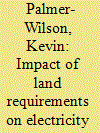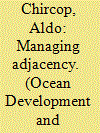| Srl | Item |
| 1 |
ID:
080570


|
|
|
|
|
| Publication |
2007.
|
| Summary/Abstract |
In 2004 and 2006, proposals were made at APEC summits to establish a Free Trade Area of the Asia-Pacific (FTAAP). This was an essentially a reworking of an idea first raised in the mid-1960s to create a Pacific Free Trade Area, or PAFTA. Although the PAFTA initiative never advanced, it helped lay the first organizational foundations for regional economic community building in the Asia-Pacific. The recent FTAAP proposal thus brings us full circle to the antecedent origins of APEC itself. If realized, an FTAAP would also create a free trade zone that would encircle the Pacific Rim economy and thereby subsume the region's now large number of bilateral and sub-regional free trade agreements (FTAs) into one unified agreement. Yet there are many inherent problems with establishing an FTAAP. These broadly relate to deconstructing the preferentialism of existing bilateral and sub-regional FTAs, achieving a consensus on the technical policy content and ideational principles on which an FTAAP would be based, and addressing various geopolitical issues such as reconciling the formation of a pan-regional Asia-Pacific FTA with an already fragile multilateral trading system. Growing interest in a 'rival' East Asia Free Trade Area project presents another geopolitical challenge. In considering these and other questions, it is concluded that many obstacles will remain in the path to realizing an FTAAP, and that this may not actually be a desirable objective to pursue for some time yet
|
|
|
|
|
|
|
|
|
|
|
|
|
|
|
|
| 2 |
ID:
166524


|
|
|
|
|
| Summary/Abstract |
Wind and solar power are predicted to dominate CO2 emission reductions in future electricity systems. Unlike spatially compact fossil fuels, harnessing renewable energy flows increases the land area impact of electricity production. This study quantifies the trade-offs between land area impacts, technology alternatives of decarbonisation pathways, and costs associated with reducing carbon emissions from electricity generation by ~ 90%.
|
|
|
|
|
|
|
|
|
|
|
|
|
|
|
|
| 3 |
ID:
108589


|
|
|
|
|
| Publication |
2011.
|
| Summary/Abstract |
The Third United Nations Conference on the Law of the Sea (1973-1982) struck a difficult compromise between the definition of the outer limits of the extended continental shelf (ECS) in relation to the international seabed area (the Area) and the making of payments and contributions by the coastal state in relation to production activities on its ECS in Article 82. The implementation of Article 82 underscores a broader and more far-reaching relationship between the continental shelf, and the ECS in particular, and the Area. In some regions there may be a relationship between the exclusive economic zone and the Area, where there is no ECS. Effectively, the relationship translates into realities and expectations of good neighborliness. This article examines this relationship and the possible approaches for the management of identified challenges.
|
|
|
|
|
|
|
|
|
|
|
|
|
|
|
|